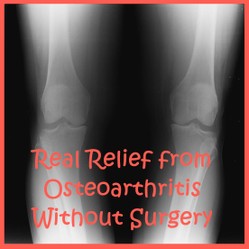This is part three of a three part series.

It's not tha pants that make your bum look big...it's your bum! 3/3
by JessPaige
It's not those pants that make your bum look big, it's all the hidden sugars that you consume throughout the day. Why 99% fat-free is your biggest nightmare.
Drivers, start your trollies…
The trick to maintaining a balanced blood sugar is to:
1 avoid simple carbohydrates, which are absorbed into the bloodstream quickly
2 eat more complex carbohydrates, which are absorbed slowly .
It’s not rocket science, you just need to poke around in your trolley and put a few things back on the shelves. Depending on how you eat, you might like to park your trolley and go get a whole new one….
Remember the moral of Aesop's story about the tortoise and the hare? Slow and steady wins the race. The hare's burst of energy at the start of the race put him in the lead. But he couldn't maintain the pace and fell behind. The tortoise, on the other hand, plodded along steadily and ended up winning. You can think of simple carbohydrates as the hare and complex carbohydrates as the tortoise. If you supply your body with plenty of complex carbohydrates (whole grains, fruits, vegetables, and legumes) rather than simple carbohydrates, your blood sugar levels will rise more slowly, and they will stay steadier. That means you'll have a more constant supply of energy.
What do I take out of my trolley?
Hide and seek - sneaky sugars and reading labels
Start by taking out all the things with ‘overt’ (obvious) sugars in them.
Remove: cakes and biscuits
I know you’re not going to stop eating these altogether, and let’s face it, sometimes it’s cheaper to buy biscuits than it is to bake them – but please take out the worst offenders. Anything with chocolate coating, hundreds and thousands, gooey bits should be removed.
Replace with: plain biscuits – roundwine, gingernuts, or even better start home baking. Fruit muffins are a good option and can be put in the freezer for lunches, or so they don’t all disappear half an hour after being baked. Halve the amount of sugar that the recipe tells you to put in, instead add a little fruit such as sultanas, pears, frozen blueberries, or boysenberries for a bit more sweetness.
Now we get to the sneaky hidden sugars – or covert sugars. Look for things in your trolley like canned baked beans, tomato sauce, meusli bars, flavoured yoghurt, cereals, canned fruit in syrup. These hidden sugars are found under various guises. On food labels look for the 'Carbohydrates’ This will be divided into “total’ and ‘sugars’. Divide the number of ‘sugars’ grams by 4 and that will give you the number of teaspoons of sugar in that product. Also a quick look at the ingredients list will give you a lot of information, but it is written in terms to bamboozle you. Sugar by any other name…..well, actually there’s a lot of other names:
- hydrolysed starch
- invert sugar
- brown rice syrup
- malted barley
- high fructose corn syrup
- molasses
- Barley malt
- Fruit juice conc
- glucose invert sugar
- corn syrup
- maltodextrin or dextrin
- maltose
- dextrose
- fructose
- cane juice
- sucrose
These are all forms of refined sugar. If it appears towards the beginning of the list of ingredients, it means there is a significant amount of it in the product.
Remove: cakes and biscuits
I know you’re not going to stop eating these altogether, and let’s face it, sometimes it’s cheaper to buy biscuits than it is to bake them – but please take out the worst offenders. Anything with chocolate coating, hundreds and thousands, gooey bits or blindingly bright colours should be removed.
Replace with: plain biscuits – roundwine, gingernuts, or even better, start home baking. Start? I bet you've got your apron on now! Fruit muffins are a good option and can be put in the freezer for lunches, so they don’t all disappear half an hour after being baked. Halve the amount of sugar that the recipe tells you to put in, instead add a little fruit such as sultanas, pears, frozen blueberries, or boysenberries for a bit more sweetness.
Remove: full sugar products such as baked beans, mayonnaises, canned fruit in syrups, soft drinks, fruit juices. These all contain 'covert' or sneaky, hidden sugars. Quite a lot of sneaky hidden sugar in fact - most people average about a 250ml glass full of sugar PER DAY!
Replace with: Lite products – baked beans, canned fruit. These have less sugar in them, every bit helps. Don’t get confused by the ‘lite’ products that are referring to less fat – ie especially those that say 99% fat free. These have more sugar in them to increase the flavour that is lost by having less fat. Compare ‘lite’ mayonnaise with ordinary mayonnaise – usually the ‘lite’ one will have less fat but more sugar than the ordinary.
Remove: Softdrinks and fruit juices. These should be a treat only, not a daily or even weekly occurrence.
Replace with: Water or milk if you are so inclined, I personally think many people have an intolerance to cow’s milk, so vary with rice and soya milk (brands that do not have sugar added to them for flavour). Fruit juices still are a hit to the blood glucose level, so buy juices that have no added sugar, and if you have to have them, then dilute them with water. Make them 25% fruit juice and 75% water. You’ll get used to it and so will your kids.
Remove: Muesli bars are so full of sugar. Also remove fruit roll-ups and other scary looking packets of reconstituted fruit that reincarnates as brightly coloured plastic in plastic bags....are these things even digestible? Biodegradable?
Replace with: Proper, real fruit! is it so old-fashioned? A little bit of dried fruit and lots of nuts and seeds. Sunflower seeds, pumpkin seeds .
Remove: 99% Fat free products such as icecream. What a marketing gimmick! Don’t fall for it. Read the label, manufacturers use predominantly fat or sugar to make a product taste good. If a product has hardly any fat in it, (with the exception of grains etc) then it is it is likely that it has an off the scale sugar content.
Replace: Don’t bother, or make your own icecream with much less sugar.
Remove: Flavoured yoghurts.
Replace with: Acidophilus or greek yoghurts, add some frozen berries or cut up fruit.
Global warming? Nuclear bombs? Forget it, sugar will be the downfall of the human race!
Without a doubt, wholegrain brown bread is more nutritious than white bread. It is also true that brown rice is more nutritious than white rice. But, is brown sugar more nutritious than white sugar?
Sugar originates from the juice of sugar cane. Sugar cane is really a type of giant grass. When it is fully grown, it can be as tall as four or five metres. Like all grasses, sugar cane has green leaves, a stalk and roots to collect sunlight, moisture and carbon dioxide which it uses to make its own food. This is a sweet juice containing sugar.
The cane stores the food it does not need in its stalk. Other plants produce sugar and store it too. Most store it in their fruits, which is why ripe fruit is usually so sweet.
Brown sugar vs white sugar
White sugar comes from sugar cane juice. It is processed, refined, and chemically bleached. The brown color of raw sugar is due to presence of molasses. Raw sugar is actually produced in the initial stages of white sugar’s manufacturing process. So, it is coarser than white sugar and is brownish in color.
Manufacturers partially refine raw sugar to remove impurities. Because it is less refined, raw sugar does retain some of the natural mineral and vitamin content in sugarcane juice, most notably calcium, potassium, iron and magnesium (white sugar contains none of these). But since these minerals are present in only trace amounts, there is no real health benefit to using brown sugar. So, the next time you pat yourself on the back for using brown sugar on your cereal or tea and coffee, pat yourself on the butt instead, because that’s where it’s headed straight for if you don’t burn it off.
When sugar cane or sugar beet is refined, all the vitamins including Vitamin C are lost. Natural sugar, such as that in raw fruits and vegetables, supplies the body with Vitamin C and other vitamins and minerals, also the fibre content of the fruit means that the fruit sugar is released slowly. Fruit and fruit juices are also high in sugars. Most people assume these are healthy because they are natural. It is true that fruits contain vitamins not found in sweetened beverages like lemonade and coca cola, but the impact on your blood sugar is very similar when the fibre of the fruit is removed and it is reduced to merely juice.
Your daily glass of sugar is paving the way for some estimated 200 health problems. Still don’t care? Okay, well read on..
Too much sugar:
- sugar is addictive! Studies have confirmed that we do become physically and emotionally addicted to sweets. The more we eat, the more we crave. Did I hear you scoff? Do you really think you can go a month without eating any form of sugar? Go on….I dare you!
- Eating high quantities of sugar accelerates oxidation in the body, dramatically speeding up the aging process, making you age prematurely. Think rust on a car, that’s what sugar is doing to your body both inside and out.
- Excessive consumption of sugar will make you fat – not a revelation of course, but perhaps you’re not aware that excess sugar affects every organ in the body. Initially excessive sugar is stored in the liver in the form of glucose (glycogen). When no more can be stored, excess glycogen is returned to the blood stream in the form of fatty acids. Translation: the huge amount of sugar in your 99% fat free ice cream turns into fat anyway and is stored on your hips, butt, breasts, thighs and tummy. When those places are filled up the fat is then diverted to your organs such as the heart and kidneys. Here comes heart disease, diabetes, etc….
- Sugar rots your teeth, I know, I know, I sound like your mother….but it’s scientifically proven! Sugar is worse than eating nothing, because not only does it not provide any nutrients, it actually uses nutrients in the body in order to be digested, detoxified and eliminated. The body’s acid-alkali balance is very precise and as sugar is acidic, it can change the environment of the body, leaving it open to illnesses and conditions that thrive in an acidic environment such as cancer. Minerals such as sodium, potassium and magnesium and calcium from the bones and teeth are mobilized and used to rectify the imbalance. Sugar eaten over a long period of time means that more and more minerals are used to maintain the acid-alkali balance, in order to protect the blood, so many minerals are taken from the body ie calcium from the bones and teeth that decay and general weakening occur.
- Eating a lot of sugar will contribute to Diabetes. It was noted by the co-discoverer of insulin in 1929 that among the sugar plantation owners, who ate large amounts of refined sugar, diabetes was common. Among the native sugar cane cutters, who only got to chew the raw canes (in their natural, unprocessed state) he saw no Diabetes.
Statistics in the US showed that the outbreak of Diabetes dropped sharply during World War I, when sugar was rationed. However Diabetes among young men in the armed forces,(where soldiers were supplied with sugar that the civilians were rationing) rose steadily from WWI to WWII.
- Even a small amount of sugar will depress your immune system and promote infection. Another disease that increased dramatically in Britain in the 1700’s - around the time that sugar became affordable for everyone was tuberculosis, or ‘consumption’ as it was called centuries ago. Evidence suggests that a sugar-rich diet may create the necessary environment for this bacteria. The highest incidence occurred among workers in sugar factories and refineries. Sugar has been proven to destroy the germ-killing ability of white blood cells for up to five hours after ingestion!
- Sugar can cause can cause a rapid rise of adrenaline, hyperactivity, anxiety, difficulty concentrating, and grumpiness in children. It affects children’s learning capacity, adversely affecting children’s grades at school and causing learning disorders. In juvenile rehabilitation camps, when children were put on a low sugar diet, there was a 44 per cent drop in antisocial behaviour.
- Sugar feeds cancer cells and has been connected with the development of cancer of the breast, ovaries, prostate, rectum, pancreas, biliary tract, lung, gallbladder and stomach.
If you’re still not convinced then I ‘ll continue:
Increased risk of Alzheimer’s, Parkinson’s, Multiple Sclerosis, ulcerative colitis & Crohn’s. Liver, kidney, and pancreatic damage, migraine, gout, obesity, cardiovascular disease, high blood pressure, high bad cholesterol and low good cholesterol, inflammatory diseases, cataracts, kidney stones, gum disease, asthma, osteoporosis, depression, and yeast infections, reduces the ability to think clearly, and may permanently impact early childhood brain development and even eczema in children.
Please do not use artificial sweeteners as a way of using less sugar! These “worse than sugar” alternatives are responsible for a whole different set of potential health problems.
Aspartame, sold as Equal ® or NutraSweet ® accounts for more complaints to the FDA than any food product ever sold. Made of phenylalanine, aspartic acid, and methanol, it also breaks down into formaldehyde and formic acid. Aspartame blocks the production of serotonin in the brain, so it is not surprising that so many complaints are neurological in origin. A few of the problems linked to aspartame include: Depression, sleep disorders, seizures, lupus, Parkinson’s, brain lesions, vision loss, asthma, Irritable Bowel Syndrome, Multiple Sclerosis, blackouts, fibromyalgia, male infertility, severe mental confusion, muscle cramps, mood swings, and hyperactivity.
Sucralose, sold as Splenda, is marketed as “made from sugar”, but its ingredients include: acetone, ammonium chloride, chlorine, benzene, toluene, formaldehyde, and a dozen other chemicals. Some are known carcinogens, while others are known to cause central nervous system (brain & spinal cord) and immune system disorders. It is now used in over 3,000 products. Virtually no testing was done for safety prior to its release, and its popularity has now surpassed that of aspartame. Recent studies have shown it to raise triglycerides, LDL cholesterol, and certain pre diabetes markers, while lowering good HDL and potassium. On a personal note, I bought a packet of Splenda to use in baking when I was trying to cut down my own sugar consumption. I used one teaspoon in a hot drink and the next day I lost my voice, I was completely hoarse for four days. I thought it must be a coincidence and so I tried it once again. The same thing happened, hoarse for four days. I knew the Splenda was the cause of it now, but I thought just for the sake of clinical observation I would try it again a week later. You guessed it, hoarse for four days again (my husband was loving this!).
Please, at least cut your sugar consumption by half, and then keep trying to reduce it from there. Do not use artificial sweeteners, as an alternative to refined white sugar, try to use more natural sweeteners such as honey, molasses, brown rice syrup, stevia (a naturally grown herb that has good research behind it) in your diet, and of course use these in modest amounts too.
 | Sweet Deception: Why Splenda, NutraSweet, and the FDA May Be Hazardous to Your Health Most people believe that sucralose (Splenda) is a perfectly safe artificial sweetener. Big business and the FDA have fostered that dangerous misconception. The truth is Splenda ... |
 | Skinny Bitch Not your typical boring diet book, this is a tart-tongued, no-holds-barred wakeup call to all women who want to be thin. With such blunt advice as, "Soda is liquid Satan" and "Y... |
 | Sell Your Specialty Food: Market, Distribute, and Profit from Your Kitchen Creation Artisanal. Organic. Fair Trade. Natural. Handmade. Consumers are clamoring for quality and taste, and there is a growing trend toward organic foods and international food. With ... |
 | The Intolerant Gourmet: Glorious Food without Gluten and Lactose At last—a cookbook of pleasure, not compromise, for those with food intolerances It’s estimated that nearly 1 in 3 North Americans is lactose-intolerant and that 1 in 133 is glu... |
 | The Gluten-Free Gourmet Cooks Comfort Foods: Creating Old Favorites with the New Flours The latest addition to the bestselling series of cookbooks that have sold more than 350,000 copies—now in paperback In this latest addition to the Gluten-free Gourmet series, Be... |
 | Gourmet Nutrition: The Cookbook for the Fit Food Lover From the creators of Precision Nutrition comes a cookbook for people who love to eat great food, but hate that after-dinner guilt. For those who love to eat with style, but hate... |
 | Jane Brody's Good Food Gourmet A collection of more than five hundred healthy but elegant recipes designed for entertaining includes hors d'oeuvres, appetizers, entrees, vegetable dishes, and desserts, and di... Only $13.82 |
You might also like
Painfree Arthritic Knees Without SurgeryAPOS therapy saved my life. I was on a fast downhill spin into disability, se...
First Aid: Would you Know What to Do?A medical emergency could happen at any moment. The question is whether you h...





 It's not tha pants that make your bum look big...it's your bum! 2/3on 06/08/2012
It's not tha pants that make your bum look big...it's your bum! 2/3on 06/08/2012
 It's not tha pants that make your bum look big...it's your bum! 1/3on 06/08/2012
It's not tha pants that make your bum look big...it's your bum! 1/3on 06/08/2012
 How to cut a pumpkin, without a man (or even a knife!)on 05/23/2012
How to cut a pumpkin, without a man (or even a knife!)on 05/23/2012
 Lavender shortbread at High Noon (with a side order of crazy)on 05/22/2012
Lavender shortbread at High Noon (with a side order of crazy)on 05/22/2012



Comments